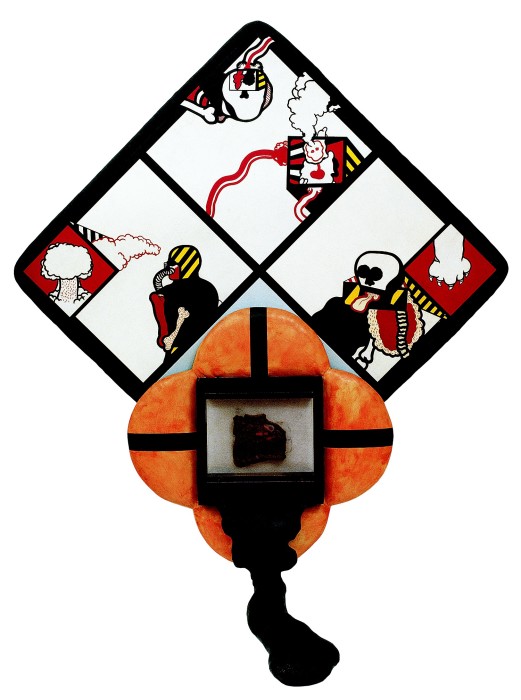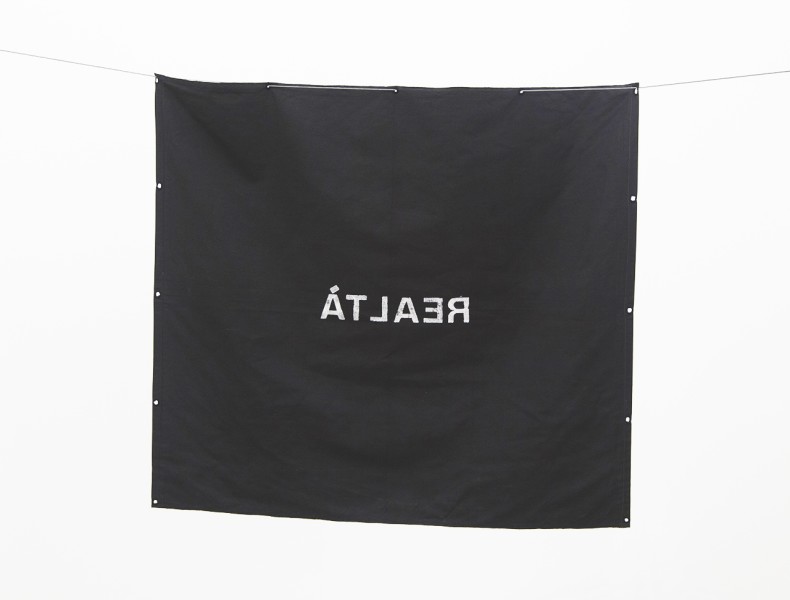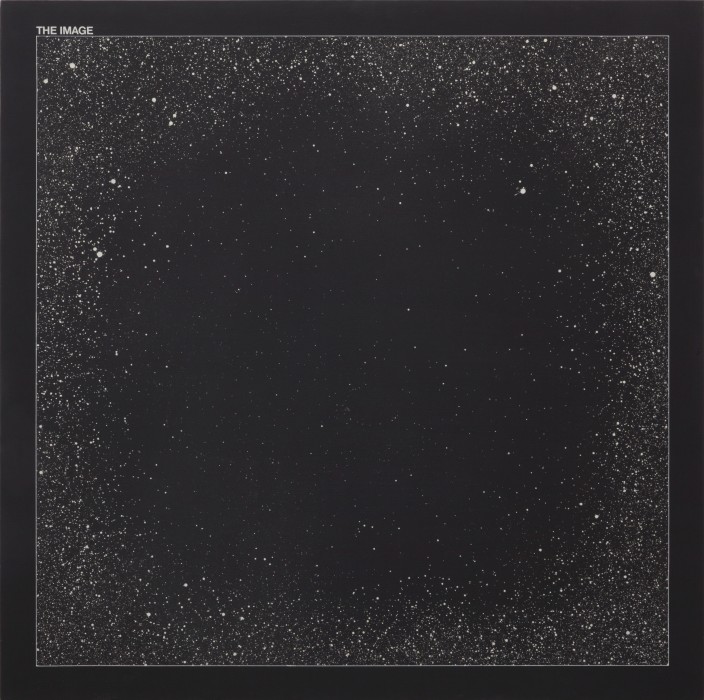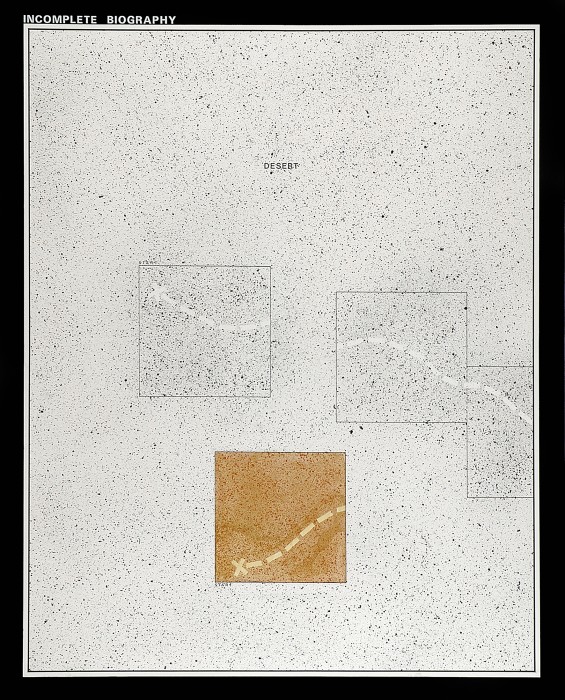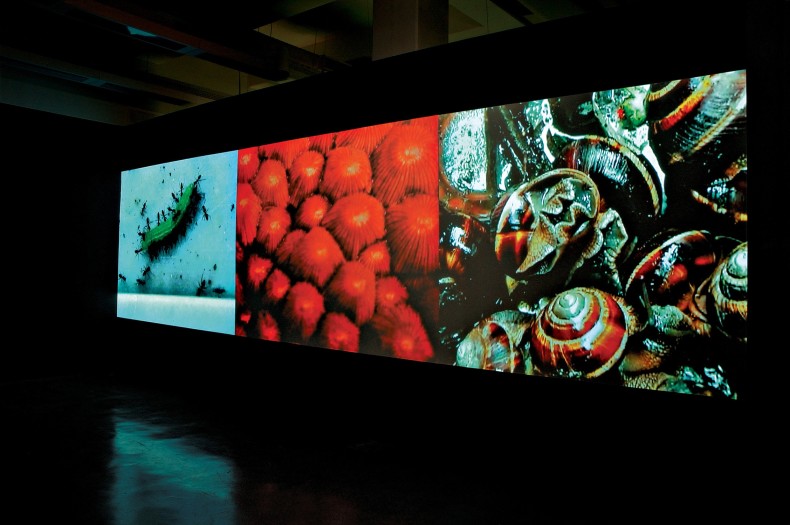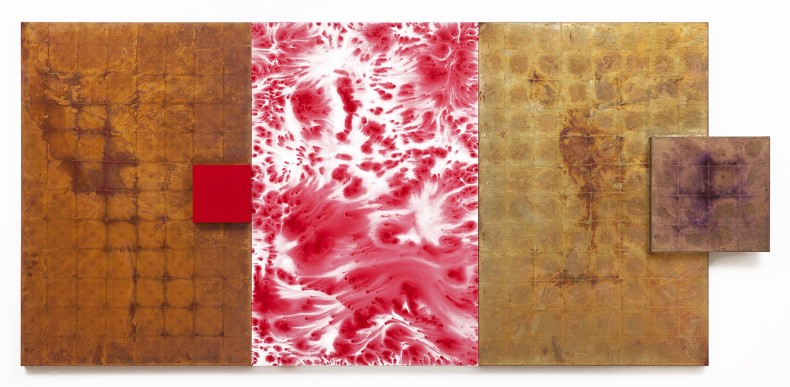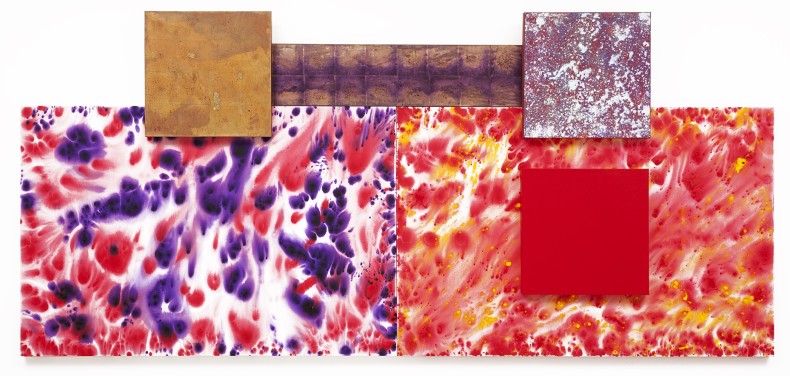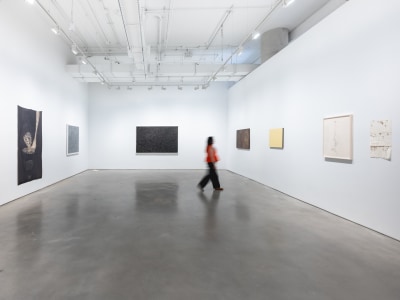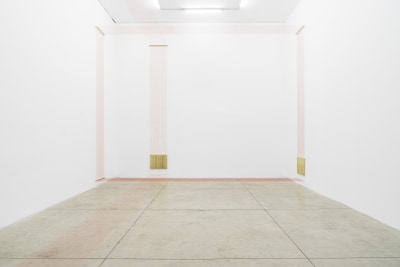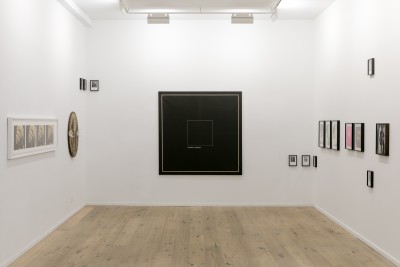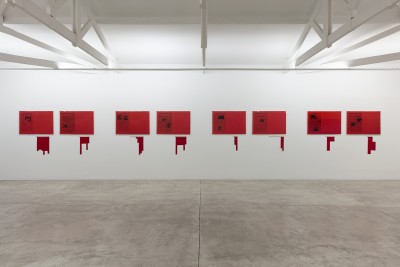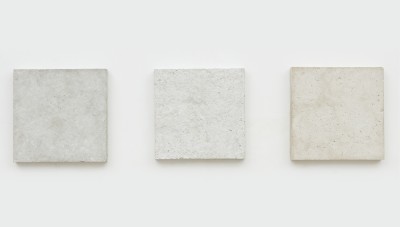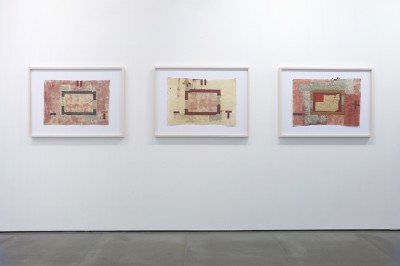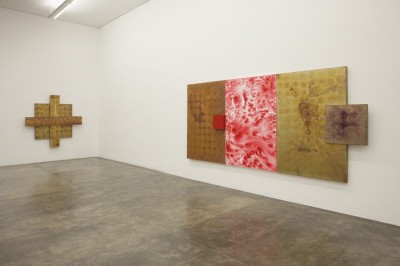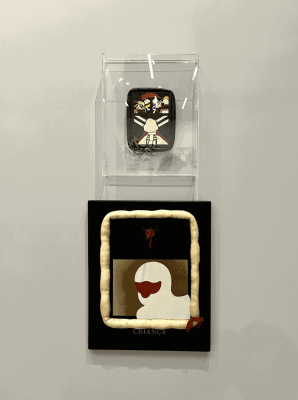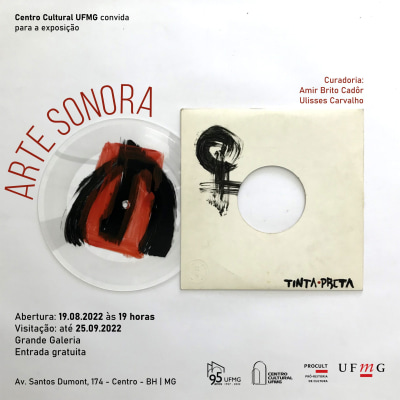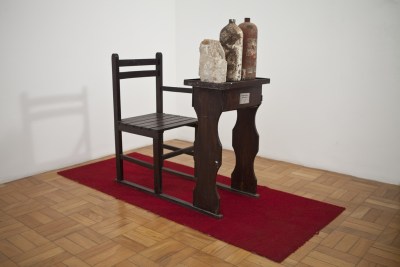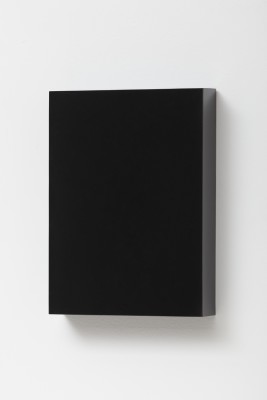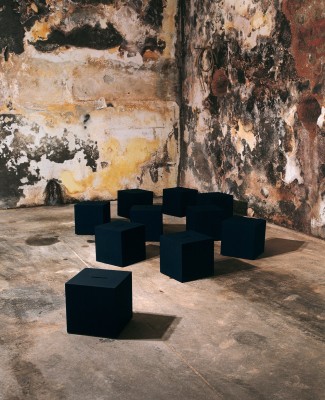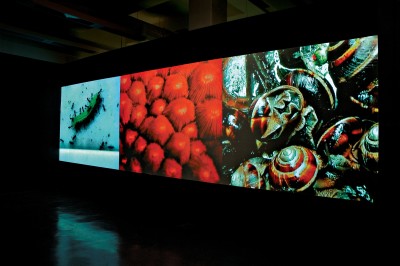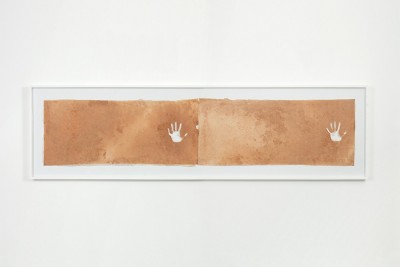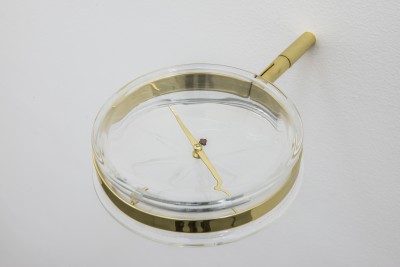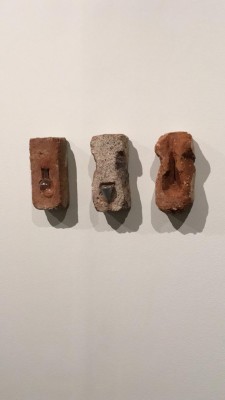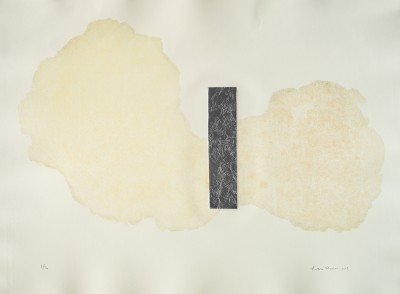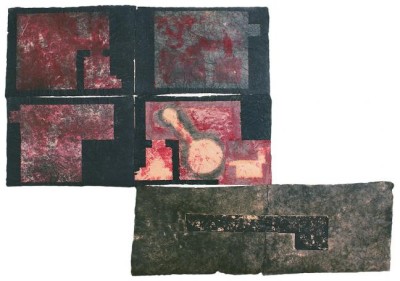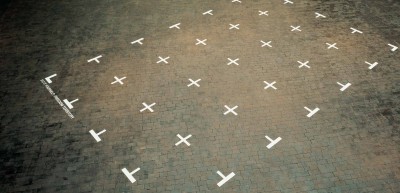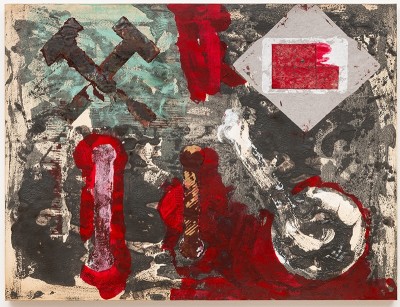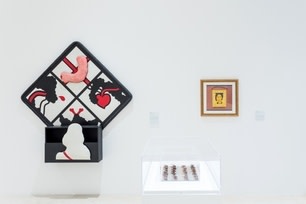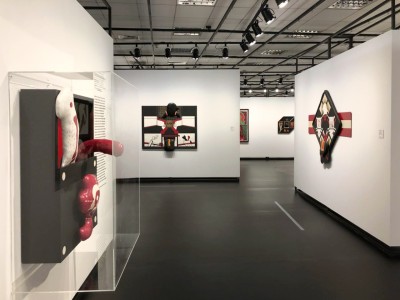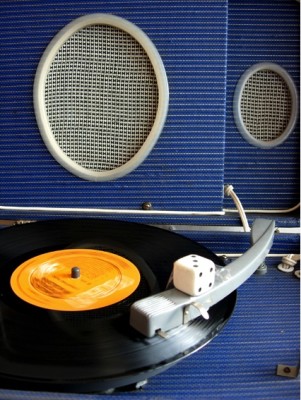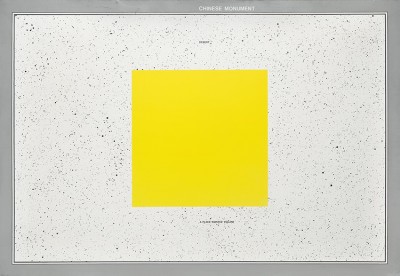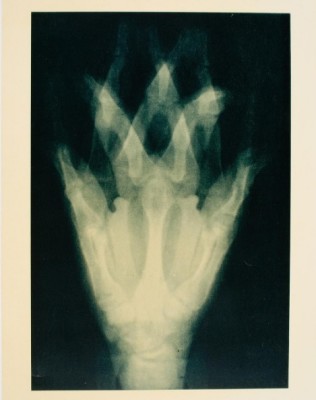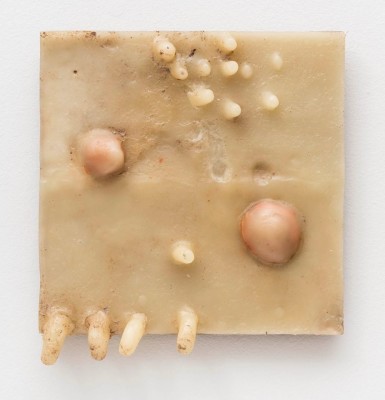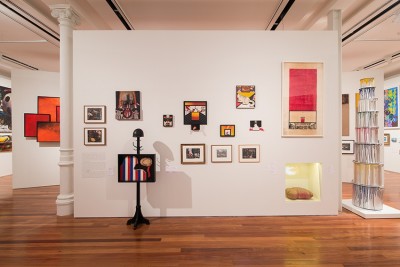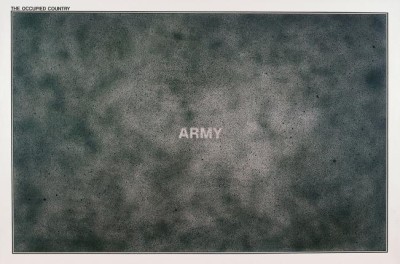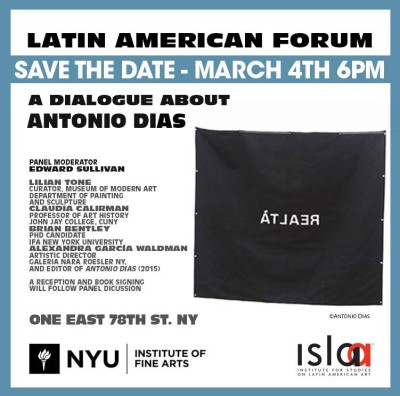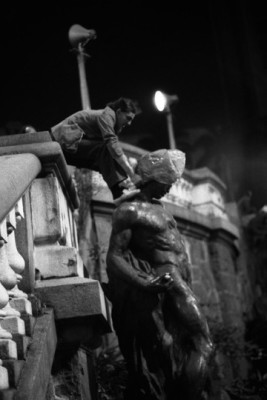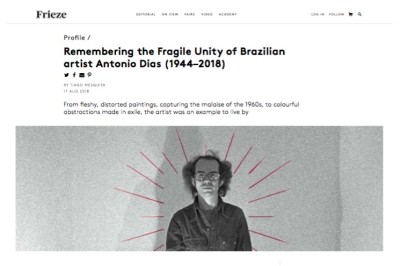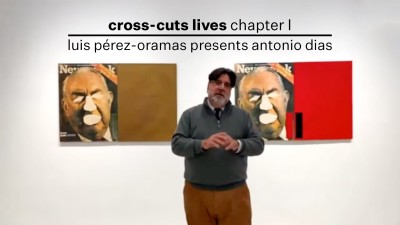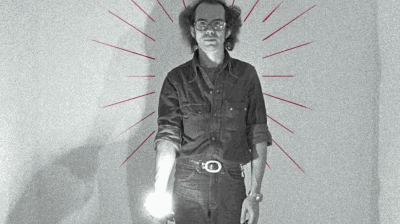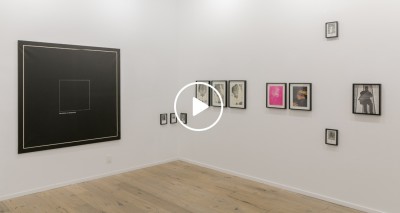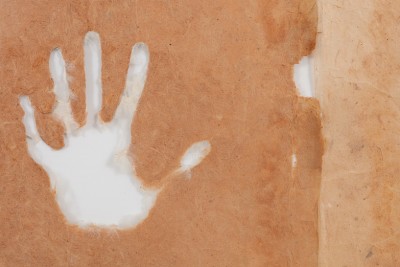Antonio Dias (b. 1944, Campina Grande, Brazil - d. 2018, Rio de Janeiro, Brazil) began his career in the 1960s, producing works marked by political criticism in the form of paintings, drawings and assemblages typical of Brazilian Pop Art and Neo Figurativism, of which he was one the main representatives. His practice is interwoven by the legacy of the Neo-concrete movement and an early awareness of the revolutionary impetus of Tropicalia. In 1966, during his self-exile in Paris after subtle criticism from the Brazilian military dictators, the artist came into contact with artists of the Italian avant-garde movement Arte Povera, namely Luciano Fabro and Giulio Paolini. In the European context, he increasingly turns to abstraction, transforming his style.
In Italy, he adopted a conceptual approach to painting, filmmaking, audio-recordings and artist books to question the meaning of art. His playful and subversive approach towards eroticism, sex, and political oppression constructed a unique artistic production, filled with formal elegance transversed by political issues and a poignant critique towards the system of art. In the late 1970's, Dias went to Nepal to learn how to produce a special type of artisanal paper that he would use until the next decade. In the 1980s, his production once again focused on painting, experimenting with metallic and mineral pigments, such as gold, copper, iron oxide and graphite, mixing these with a variety of binding agents. Most works produced during this time have a metallic sheen and feature a vast array of symbols –bones, cross, rectangle, phallus–, an underlying correlation with the artist’s earlier production.
His works have been exhibited in several institutions all over the world. Recent solo exhibitions include: Search for an Open Enigma, at Sharjah Art Foundation (2024), in Sharjah, United Arabian Emirates; Antonio Dias: Derrotas e vitórias, at Museu de Arte Moderna de São Paulo (MAM-SP) (2021), in São Paulo, Brazil; Antonio Dias: Ta Tze Bao, at Nara Roesler (2019), in New York, USA; Antonio Dias: o ilusionista, at Museu de Arte Moderna do Rio de Janeiro (MAM Rio) (2018), in Rio de Janeiro, Brazil; Una collezione, at Fondazione Marconi (2017), in Milan, Italy; Antonio Dias – Potência da pintura, at Fundação Iberê Camargo (FIC) (2014), in Porto Alegre, Brazil. Main group shows are: This Must Be the Place: Latin American Artists in New York, 1965–1975, at The Americas Society (2021), in New York, USA; Pop América, 1965–1975, at Mary & Leigh Block Museum at Northwestern University (2019), in Evanston, at Nasher Museum of Art at Duke University (2019), in Durham, and at McNay Art Museum (2018), in San Antonio, USA; Invenção de origem, at Estação Pinacoteca (2018), in São Paulo, SP, Brazil; 34th and 33th Bienal de São Paulo, Brazil (2018 and 2021); Mario Pedrosa – On the Affective Nature of Form, at Museo Nacional Centro de Arte Reina Sofía (MNCARS) (2017), in Madrid, Spain. Dias' works are in collections such as: Daros Latinamerica Collection, Zurich, Switzerland; Instituto Itaú Cultural, São Paulo, Brazil; Museum Ludwig, Cologne, Germany; Museo de Arte Latinoamericano de Buenos Aires (MALBA), Buenos Aires, Argentina; Museu de Arte Moderna de São Paulo (MAM-SP), São Paulo, Brazil; Museum of Modern Art (MoMA), New York, USA.

